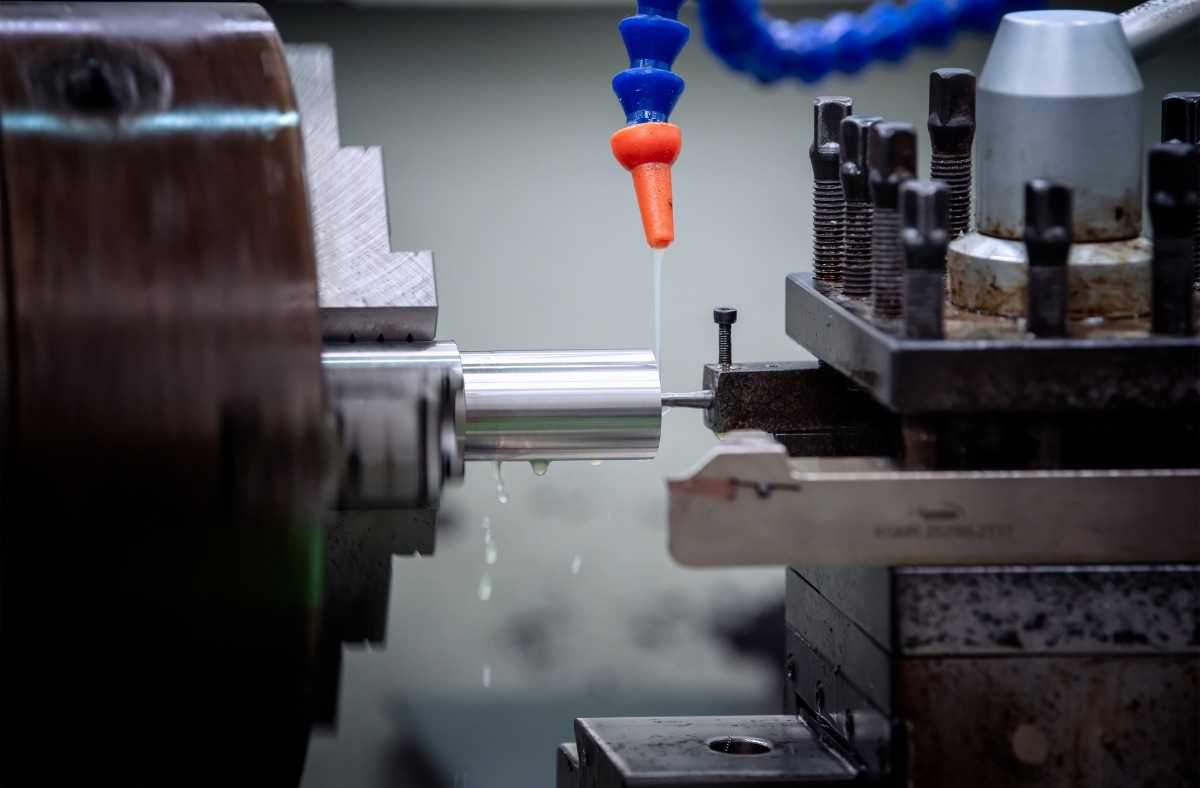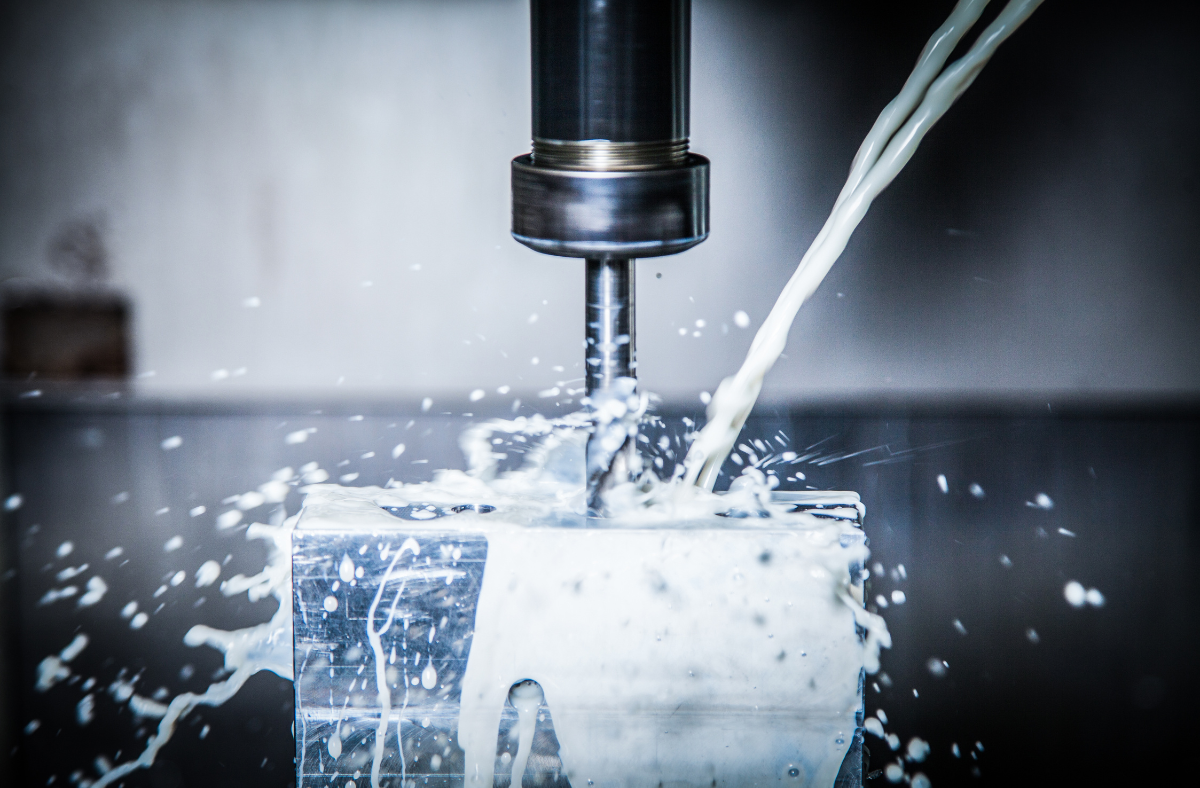Exploring the Future of CNC Coolant System Automation in 2023
Exploring the Future of CNC Coolant System Automation in 2023
CNC coolant automation provides a wave of possibilities for manufacturers looking to optimize their machining operations. With the right system in place, you can enhance precision, reduce complexity, and increase your profitability.
- Smart Coolant Systems: The use of sensors and artificial intelligence can help to create smart coolant systems that can monitor and adjust coolant flow and temperature in real-time. This will allow for better control of the machining process, improved part quality, and reduced tool wear.
- Automated Filtration Systems: Filtration systems are an important part of coolant management, and the use of automated filtration systems can help to reduce the amount of time and labor required to maintain the coolant system. This will allow for greater efficiency and cost savings.
- Integration with Machine Monitoring Systems: CNC coolant system automation is integrated with machine monitoring systems, allowing for real-time monitoring of coolant levels, temperature, and flow rates. This will help to improve the efficiency and quality of the machining process.
- Use of Advanced Coolants: The development of advanced coolants that are more environmentally friendly, have higher lubrication properties, and are more effective at reducing heat and improving part quality will likely become more common. These coolants can help to improve the overall efficiency and sustainability of the machining process.
- Remote Monitoring and Control: Remote monitoring and control of CNC coolant systems will become more prevalent, allowing for greater flexibility and control over the machining process. This will enable operators to monitor coolant levels, temperature, and flow rates from anywhere, and make adjustments as necessary.
Understanding CNC Coolant System Automation
CNC coolant automation can be broken down into three parts: process control, automatic additive dispense, and monitoring of the coolant level. Process control allows for better machine performance and increased surface finish quality, along with the ability for adjustments to be made with minimal operator intervention.
Automatic additive dispense ensures a consistent mix of concentrates, saving time as well as money on labor costs.
Finally, monitoring the level of the coolant helps to ensure an optimal mixture at all times.
Investing in Automated Fluid Delivery Systems
Investing in an automated fluid delivery system is becoming increasingly popular as manufacturers seek to reduce errors from manual handling and improve overall safety.
Automated systems are also capable of precise metering of different coolant solutions, without having to depend on manual inputs from operators which can lead to inaccuracies.
Additionally, automated systems are able to monitor and analyze real-time data, helping identify problems that otherwise might not have been caught until after costly mistakes were made.
Incorporating Smart Technologies into Your Operation
Adding intelligent technologies to your operation can help improve productivity and reduce operating costs. Smart systems like the innovative Dazzle 2™ by Zebra Skimmers are able to integrate with existing machinery. This allows you to take advantage of the latest industry trends such as remote monitoring, predictive maintenance and proactive optimization.
By leveraging this technology, operators can make quick adjustments on the fly, allowing for more flexible production cycles as well as improved efficiency and customer satisfaction.
Application Considerations Before Installing Automation Equipment
Before buying any automated system, it’s important to consider how it will be integrated into your current processes and machines.
- Will installing the equipment require additional resources?
- Do you need to run a lights out operation?
- Are there specific environmental issues that need to be addressed?
All of these considerations could affect the overall cost and timeline for installation, so it’s best to plan ahead. Once you understand all of the variables, you can make an informed decision on which smart automation technology is right for your operation.
Future Vision and the Long-term Benefits of CNC Automation
As you look further into the future, CNC automation has an incredible potential to increase your capabilities and implement consistent machining results.
Automated simulation harnessing can help reduce setup time and determine optimal parameters for different materials. Smart sensors can be deployed to track coolant purity, controlling filter frequency and shortening machine downtime.
You can also monitor machine efficiency in real-time via digital performance collection and analysis.
These advances allow you to maximize the output of your CNC machines while minimizing labor costs and improving product quality.
Key Points:
- Increased Efficiency: CNC automation can improve efficiency in manufacturing processes by reducing lead times, minimizing errors, and improving quality control. This results in higher productivity, lower costs, and increased profits.
- Greater Accuracy: CNC machines can produce parts with greater precision and accuracy than traditional manual methods. This is because they are programmed to follow specific instructions and can repeat the same process consistently and accurately.
- Enhanced Safety: CNC automation can improve safety in manufacturing processes by reducing the risk of accidents and injuries caused by manual labor. This is because CNC machines can perform dangerous tasks that would otherwise be performed by human operators.
- Improved Flexibility: CNC automation can increase flexibility in manufacturing processes by allowing for faster changeovers between different parts or products. This is because CNC machines can be reprogrammed quickly to produce different parts or products.
- Reduced Labor Costs: CNC automation can reduce labor costs by minimizing the need for manual labor. This is because CNC machines can perform tasks that would otherwise be performed by human operators, resulting in a smaller workforce and lower labor costs.
- Increased Production Capacity: CNC automation can increase production capacity by allowing for faster processing times and increased throughput. This is because CNC machines can perform tasks more quickly and consistently than manual methods, resulting in increased production rates.
The future of CNC coolant system automation is likely to involve the use of advanced technologies to improve efficiency, reduce costs, and enhance the quality of machined parts. These developments will help to drive innovation and growth in the CNC machining industry.
Overall, the long-term benefits of CNC automation are numerous and can provide significant advantages for businesses in terms of efficiency, accuracy, safety, flexibility, labor costs, and production capacity.


